Generously coated with butter and sugar and baked until crispy, Shokupan Crust Rusks are a rustic treat to enjoy with coffee or tea. These crunchy, buttery snacks are a delicious way to repurpose the crusts from Japanese milk bread when you make sandwiches like tamago sando, katsu sando, and fruit sando.
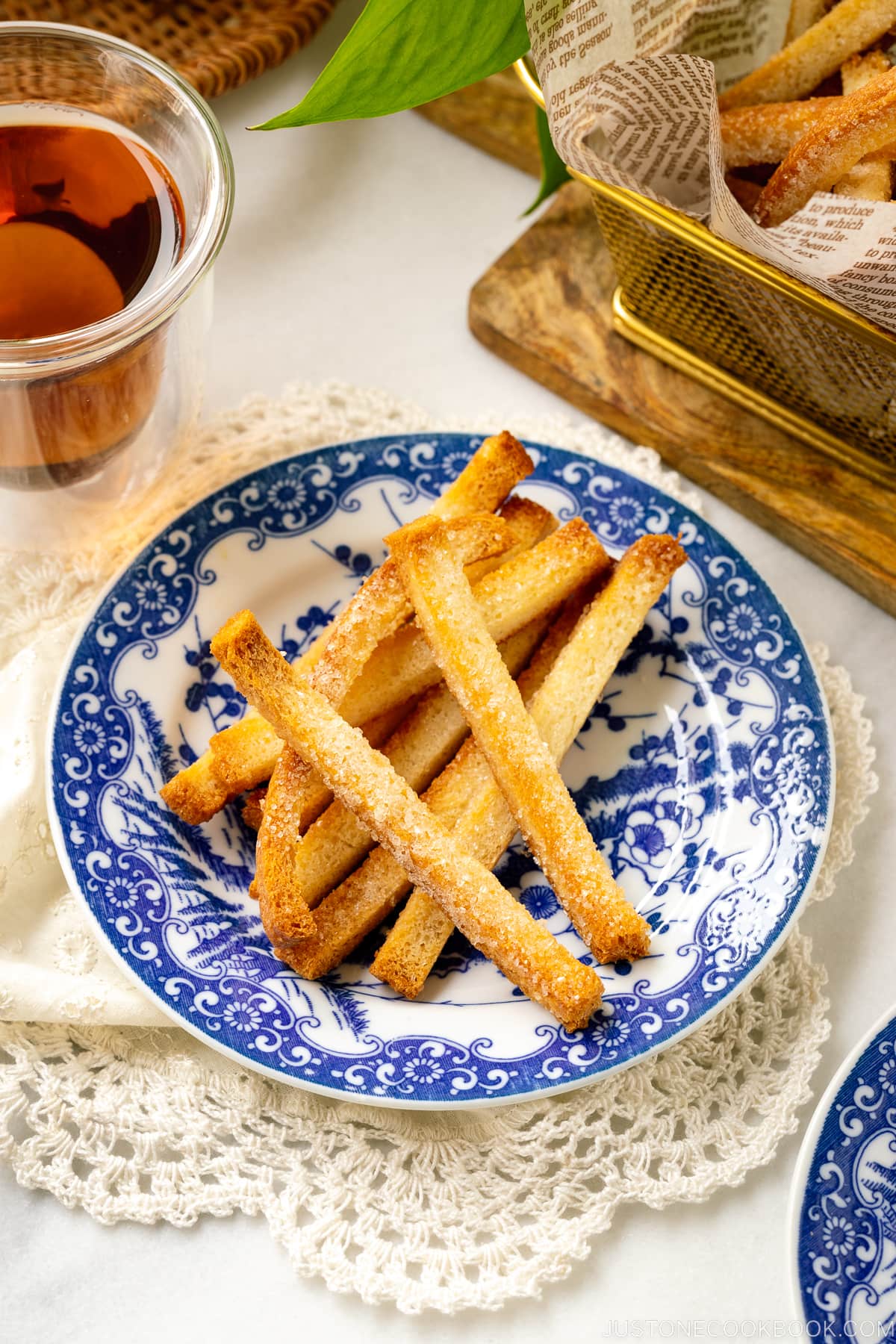
Whenever I share Japanese sandwich recipes, JOC readers often ask me what to do with the crusts I trim off. For the uninitiated, we commonly serve Japanese sandwiches with crustless bread. You might ask where this practice comes from.
Well, Japanese sandwiches were introduced by the British so we have been slicing off the bread crusts and making sandwiches similar to English tea sandwiches. I believe this gives a clean line to the presentation and yields a sandwich that is soft and tender to bite.
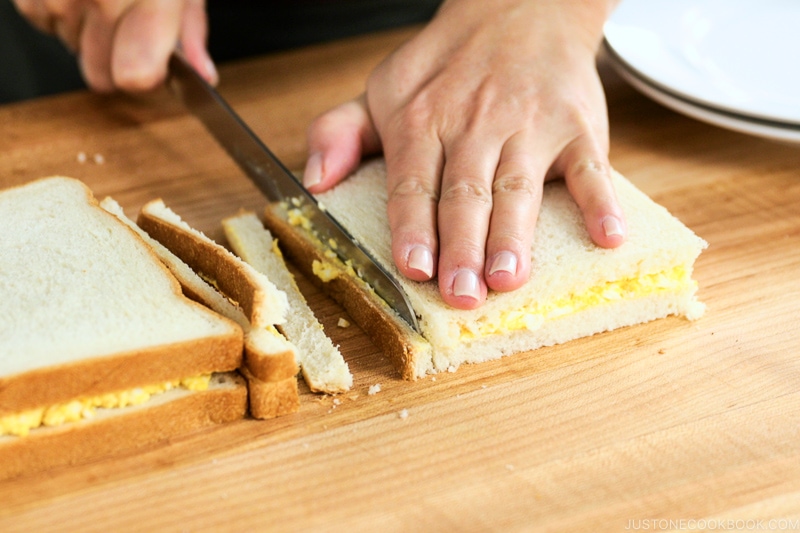
When I prepare one or two sandwiches for my children’s school lunch, I snack on those crusts instead of tossing them away. However, when I make a lot of sandwiches for my entire family, I can’t eat all the crusts so I save them up to make a sweet snack. No wasting food in my house!
In the recent Netflix series The Makanai: Cooking for the Maiko Housethe last episode ends with the main character Kiyo frying up the bread crusts to make pan no mimi rusks. And this is exactly how we repurpose the cut-off crusts, by turning them into amazingly crunchy and remarkably fun treats to munch on.
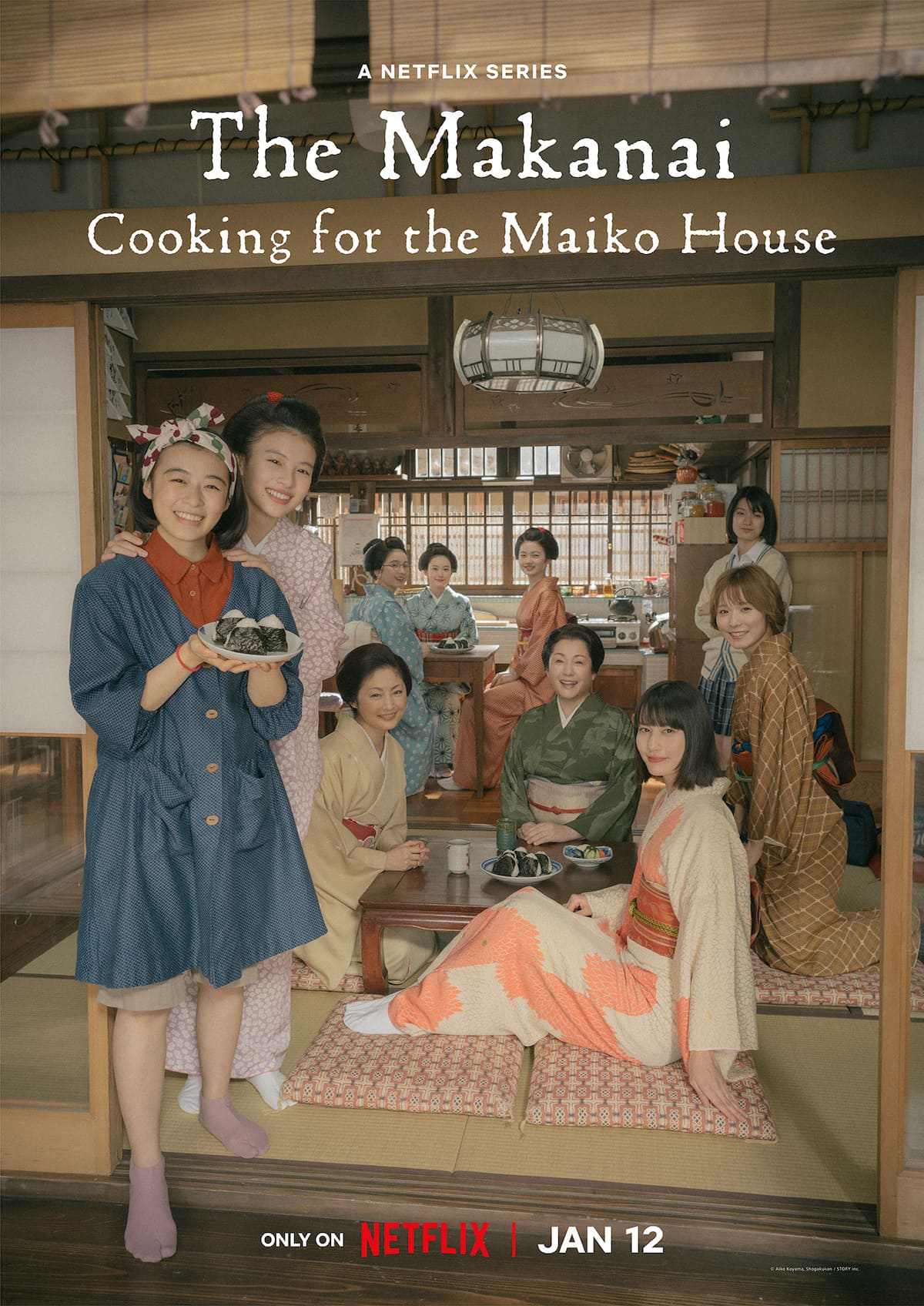
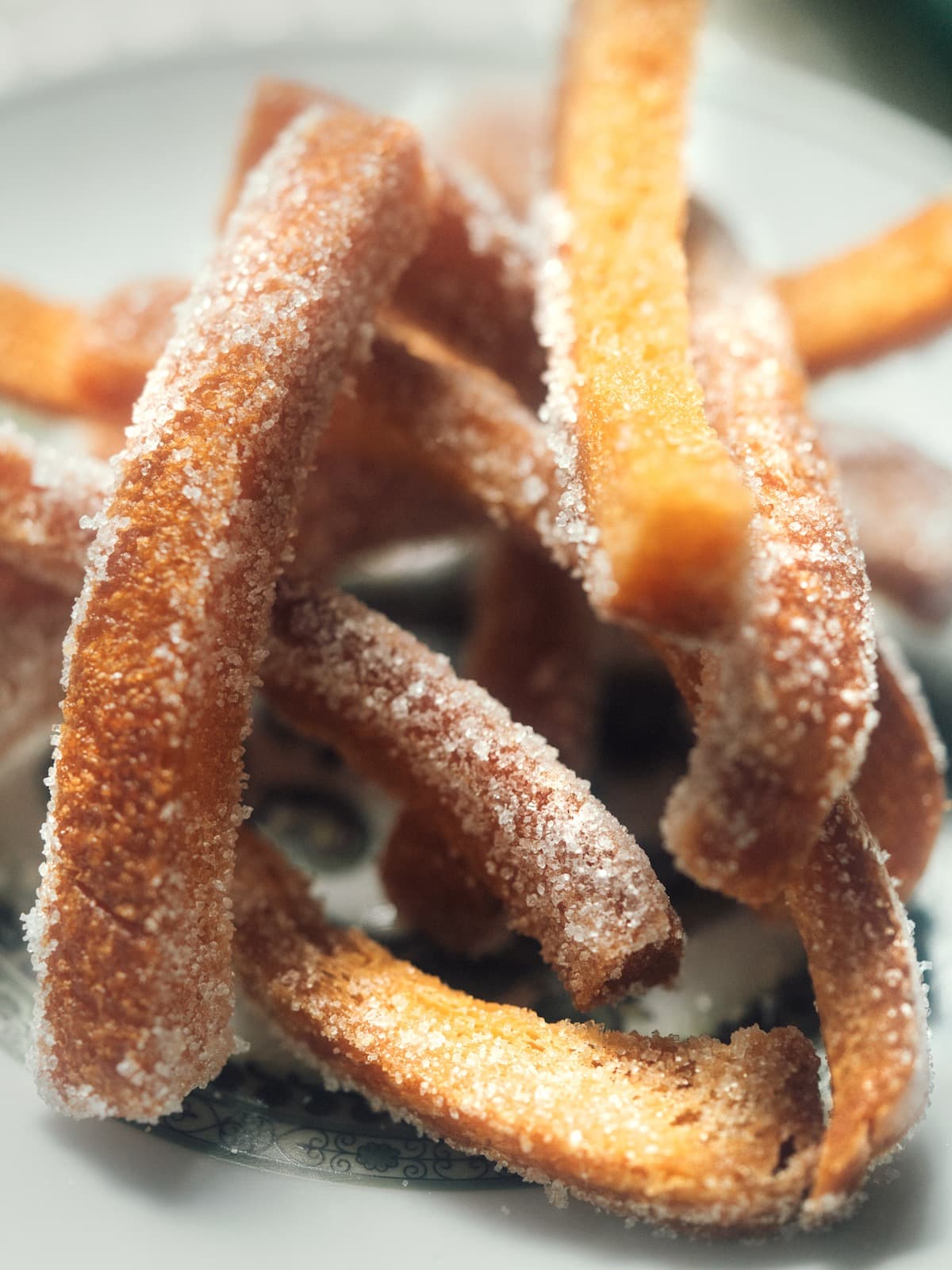
What are Rusks?
Have you heard of rusks before? Russians (ラスク, ras-ku) are hard, dry biscuits or twice-baked bread that come in many variations, including both sweet and savory. Many countries have their own versions of rusks, from table toasts to biscottis to crisp bread. A lot of Japanese articles that I read said the origin of the Japanese-style rusks comes from zwieback in Germany.
In Japan, rusks are mostly considered a sweet food. We usually make rusks by pan-frying or baking bread or cake and coating them with butter and sugar, almond slicesor chocolate and flavored chocolate.
In The MakanaiKiyo deep-fried the crusts in a pot filled with cooking oil and then finished with sugar. Technically, in Japan, we usually call these deep-fried crusts pan no mimi age-pan (fried bread ears) and would not call them “rusks” as they don’t have the signature buttered taste.
So for my version, I coat the crusts with melted butter and sugar and then baked until golden brown. These shokupan crust rusks are crispy, buttery, and sugary!
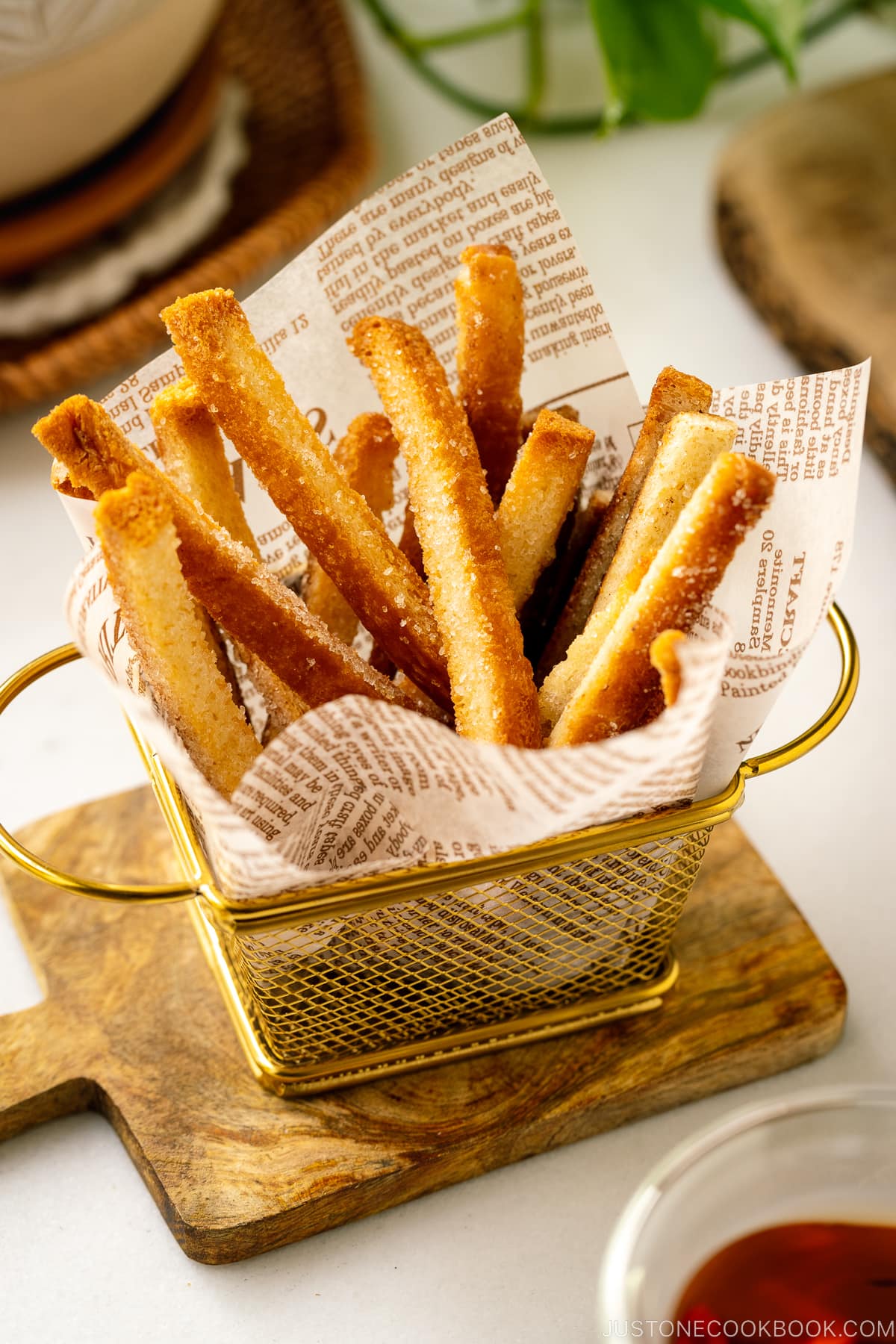
How to Make Shokupan Crust Rusks
Ingredients You’ll Need
- Crusts from Japanese milk bread
- Unsalted butter
- Sugar
Overview: Cooking Steps
- Dry the crusts in a 250ºF (120ºC) standard oven or a 225ºF (105ºC) convection oven (recommended) for 8-10 minutes until the crusts are crisp and completely dry. You can alternatively use a toaster oven. Don’t brown them yet!
- Brush all sides of the dried crusts with melted butter and coat them with sugar.
- Bake in a 350ºF (180ºC) standard/toaster oven or a 325ºF (165ºC) convection oven (recommended) for 5-10 minutes until golden and crispy.
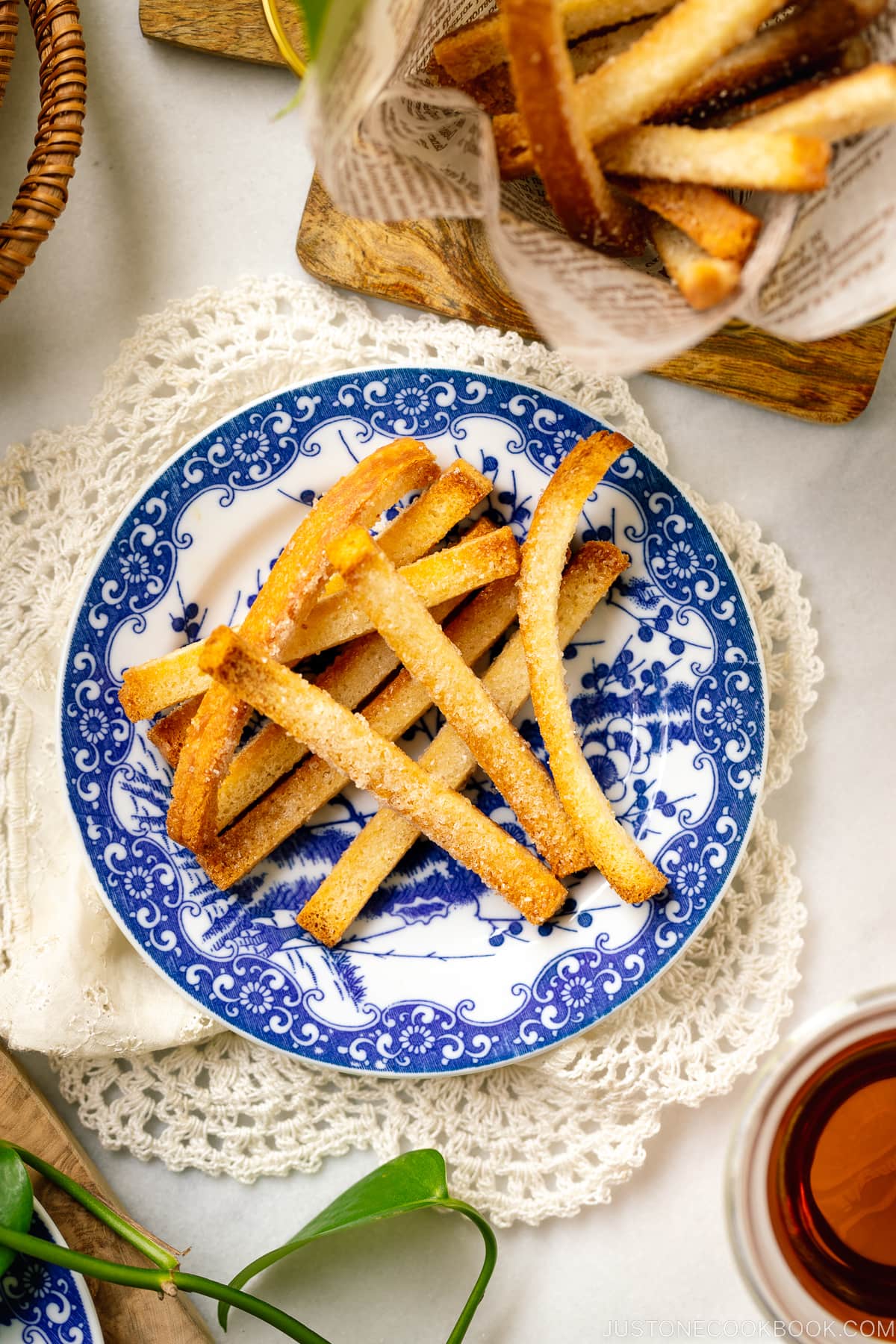
Cooking Tips
- Bake the crusts until thoroughly dry and crispy – It’s very important to start with dry bread crusts. If the white crumb part is soft, they take forever to become crispy during the final bake. Use a low oven temperature (I used 250ºF/120ºC) for this step.
- Use a pastry brush to coat the crusts with butter and sugar – I’ve tried coating the crusts in the melted butter in the frying pan. It’s quite challenging and frustrating as some of the crusts are not straight and they don’t want to face down to absorb the melted butter. Since then, I’ve been using the pastry brush to coat the crusts with melted butter and it’s been stress-free! It doesn’t take much time with this method and uses slightly less butter. This recipe is supposed to be buttery and sweet, so don’t reduce the amount of butter and sugar.
- Bake until golden and crispy – The crusts should be crispy/crunchy and golden brown. You can hear the crunchy and crispy sound when you touch the crusts.
Saving Shokupan Crusts for Later
You may not always have the time to make Shokupan Crust Rusks after you make sandwiches. Don’t throw away the crust strips or the end slices! Put them in a freezer bag or airtight container and keep them in the freezer until you’re ready to use! Maybe you may save up a week’s worth of crust strips and make the shokupan crust rusks on the weekend.
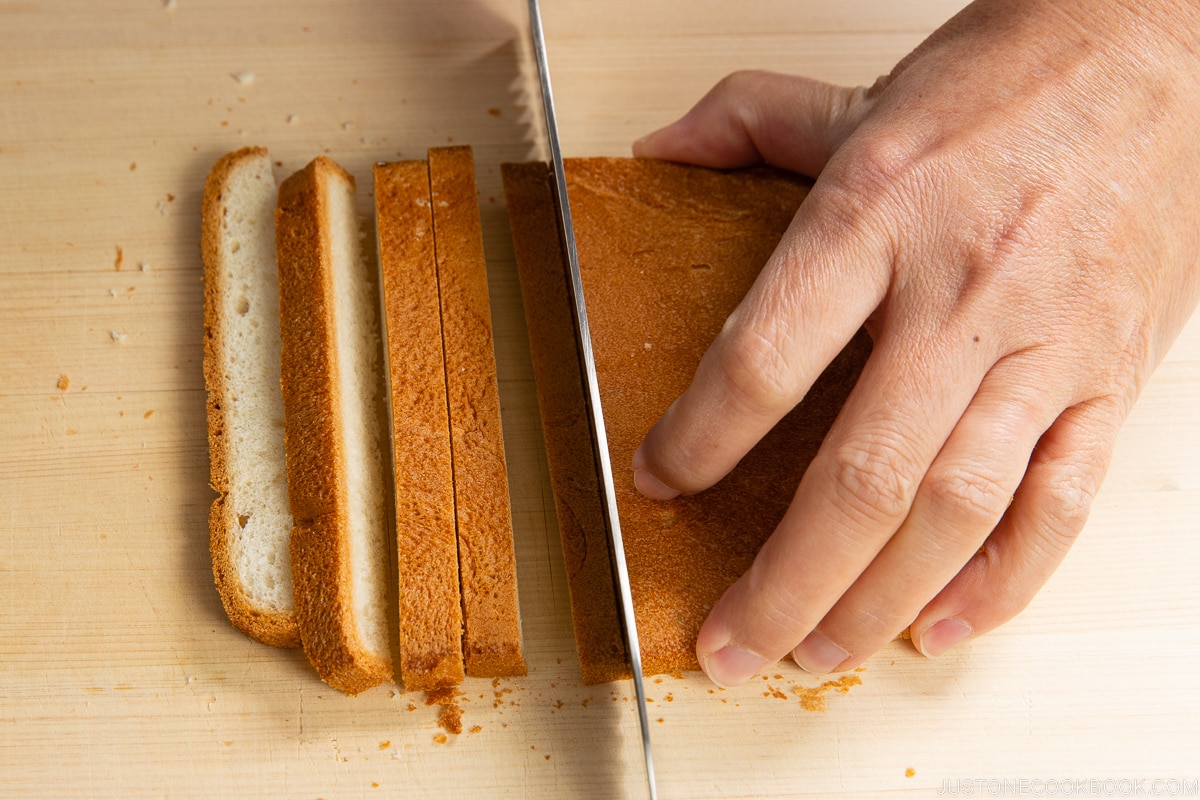
If you have end slices, cut them into strips before you freeze them. That way, you can put frozen strips straight into the oven to dry them out (the first step of the recipe)!
My children absolutely love these shokupan crust rusks. Hope you and your family enjoy this snack!
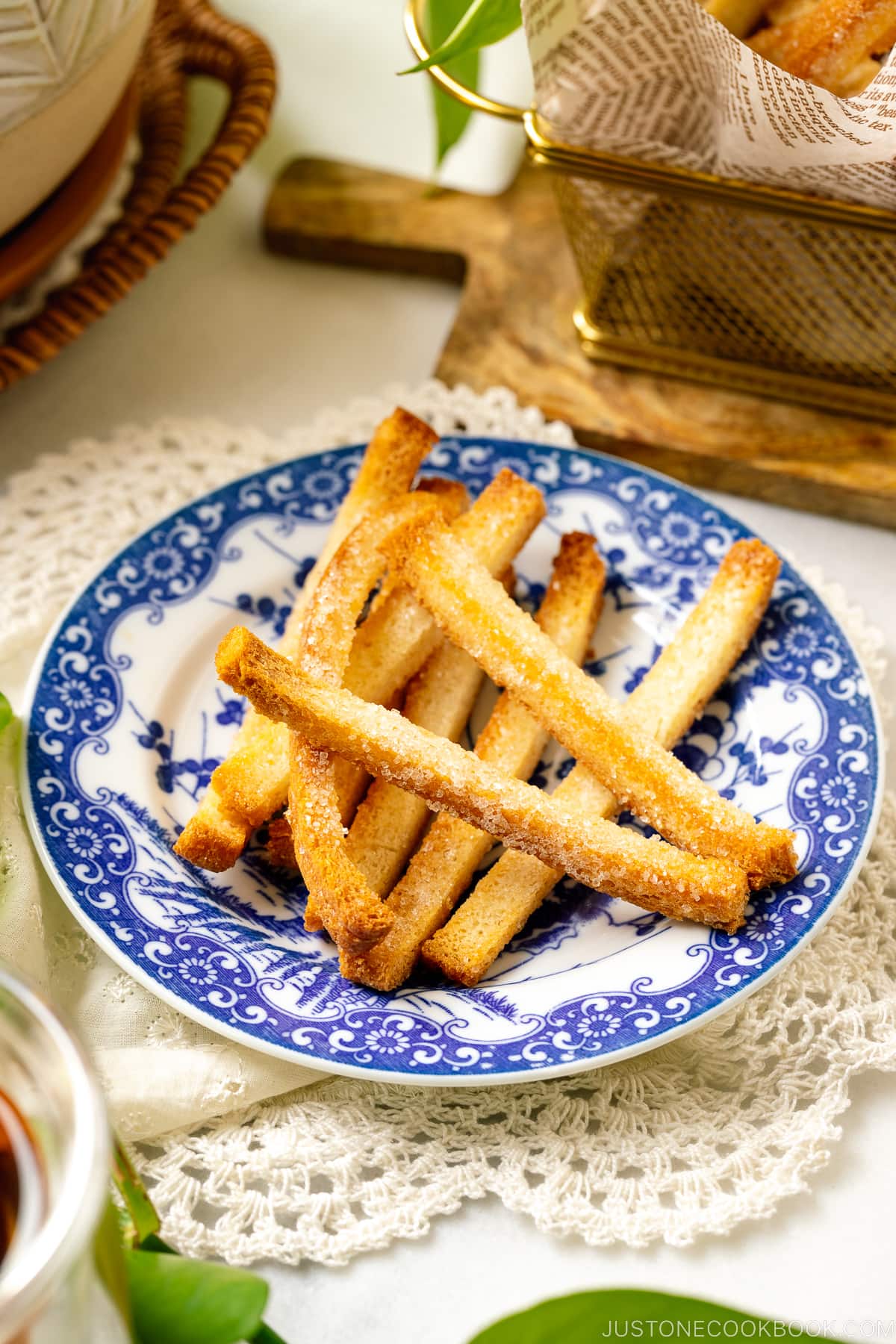
Japanese Sandwich Recipes
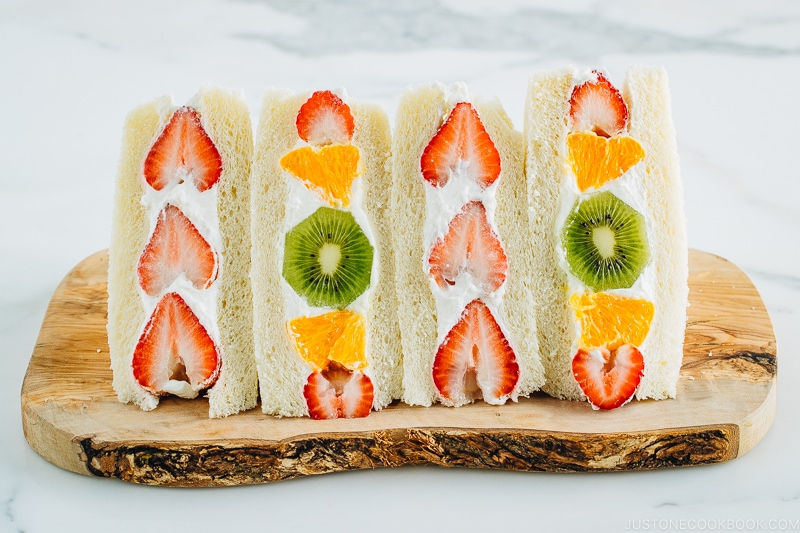
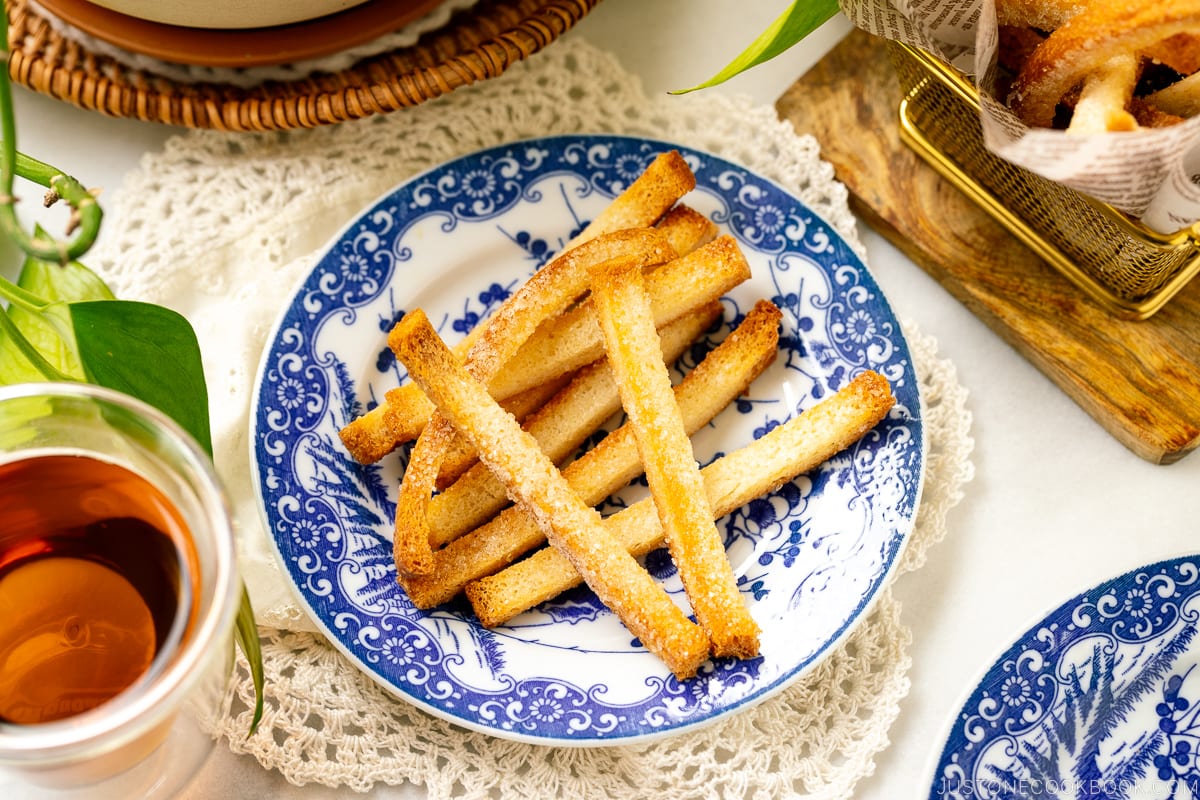
Wish to learn more about Japanese cooking? Sign up for our free newsletter to receive cooking tips & recipe updates! And stay in touch with me on Facebook, Pinterest, YouTubeand Instagram.
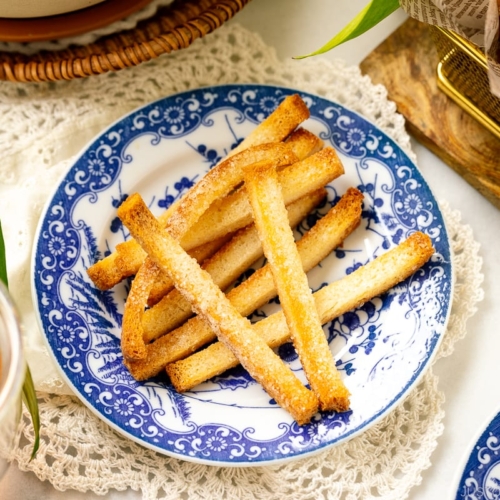
Shokupan Crust Rusks
Generously coated with butter and sugar and baked until crispy, Shokupan Crust Rusks are a rustic treat to enjoy with coffee or tea. These crunchy, buttery snacks are a delicious way to repurpose the crusts from Japanese milk bread when you make sandwiches like tamago sando, katsu shirt, and fruit shirt.
Prevent your screen from going dark
Instructions
-
Gather all the ingredients. You can see in the image the 16 strips of Japanese milk bread crust that I cut off from 4 slices of sandwich bread. You could also use 2 end slices cut into 8 strips each. This recipe is a perfect way to use up the end piece of a loaf of shokupan! Each crust strip here is roughly ½-inch (1.2-cm) thick; it’s fine to use crust strips of different lengths. Tip: You can also use frozen crusts and end-piece strips that you previously saved in the freezer.
To Dry the Crusts
-
First, dry 16 strips of crust from Japanese milk bread. Preheat a toaster oven or standard oven (I used my countertop Anova Precision Oven) to 250ºF (120ºC); for a convection oven (recommended), reduce the cooking temperature by 25ºF (15ºC). Place the crust strips directly on the oven rack, or on a wire rack in a baking sheet, leaving plenty of space between the strips. Bake for 8–10 minutes or until they are dry and crisp, but don‘t brown them yet. If using, put your frozen crust strips directly in the oven to defrost and dry; this may take a bit longer. Transfer the dried strips onto a tray or plate. Tip: The main purpose here is to let the moisture of the bread evaporate. If your crusts are dry, your rusks will be lighter and crispier.
To Bake the Crusts (recommended)
-
Preheat the oven to 350ºF (180ºC). For a convection oven (recommended), reduce the cooking temperature by 25ºF (15ºC). Set the oven rack to the upper middle position for a standard oven or the middle position for a countertop oven.
-
Meanwhile, put 4 Tbsp unsalted butter in a glass bowl and microwave it until completely melted. For my 1100W microwave oven, it took 30 seconds.
-
Using a pastry brush, coat all sides of the oven-dried crust strips with the melted butter.
-
Then, sprinkle 1 Tbsp sugar on all sides of the crusts. Optional: For a tasty variation, you can mix a bit of ground cinnamon into your sugar before sprinkling.
-
Prepare a baking sheet fitted with a wire rack. Put the crust strips on the wire rack, leaving some space around the strips. Tip: With the wire rack, you don‘t have to flip the strips as the hot air will circulate on the bottom side.
-
Bake in the preheated oven for 5–10 minutes or until the strips are golden brown and crispy. Remove from the oven and let cool completely. If some of them are not crispy or golden yet, you can leave them on the baking sheet in the oven with the remaining heat.
To Store
-
After the rusks are completely cool, keep them in an airtight container and store in a cool, dark place for 1–2 weeks. If you add a Food Safe Silica Gel Desiccant Packetyou can keep them for 2–3 months.
To Pan-Fry the Crusts (optional)
-
Heat a large (11-inch) frying pan on low and add the butter. After the butter has melted a little bit (see the picture), turn off the heat and remove the pan from the hot stove. The residual heat will continue to gently melt the butter. Tip: We do not want to cook the butter for too long, as the milk solids will burn and turn black. If you‘re making more than 2 servings at once, I recommend either working on one batch at a time to evenly distribute the butter or using the oven method instead.
-
Using a pastry brush, coat all sides of the oven-dried crusts with the melted butter.
-
Why don‘t we just add the crust strips to the melted butter in the pan? Some of the crusts may not be straight, so you might have trouble flipping them and coating all sides with the melted butter in the pan. You will likely need more butter as well, based on my experience during recipe testing.
-
After coating the crusts with butter, add all the strips to the pan with the remaining butter. Pan-fry on medium-low heat until they are golden brown and crispy, flipping the crusts often. Rusks should taste buttery, so feel free to add more butter to coat the crusts well. Once they‘re golden brown, remove from the pan and set aside on a tray or plate.
-
While the rusks are hot, sprinkle them with the sugar on all sides to coat. Optional: For a tasty variation, you can mix a bit of ground cinnamon into your sugar before sprinkling.
Nutrition
Nutrition Facts
Shokupan Crust Rusks
Amount per Serving
% Daily Value*
* Percent Daily Values are based on a 2000 calorie diet.
©JustOneCookbook.com Content and photographs are copyright protected. Sharing of this recipe is both encouraged and appreciated. Copying and/or pasting full recipes to any website or social media is strictly prohibited. Please view my photo use policy here.

